
-
Find the right food for your petTake this quiz to see which food may be the best for your furry friend.Find the right food for your petTake this quiz to see which food may be the best for your furry friend.Health CategoryFeatured products
 Adult Salmon & Brown Rice Recipe Dog Food
Adult Salmon & Brown Rice Recipe Dog FoodSupports lean muscle and beautiful coat for adult dogs
Shop Now Perfect Weight & Joint Support Large Breed Chicken & Brown Rice Recipe Dog Food
Perfect Weight & Joint Support Large Breed Chicken & Brown Rice Recipe Dog FoodThis weight management and mobility support dog food was created with Hill’s unique understanding of the biology of overweight dogs
Shop Now Adult 7+ Healthy Cuisine Roasted Chicken, Carrots & Spinach Stew Dog Food
Adult 7+ Healthy Cuisine Roasted Chicken, Carrots & Spinach Stew Dog FoodDelicious roasted chicken paired with tender vegetables in a succulent stew
Shop NowFeatured products Adult Salmon & Brown Rice Recipe Cat Food
Adult Salmon & Brown Rice Recipe Cat FoodSupports lean muscle and beautiful fur for adult cats
Shop Now Adult Urinary Hairball Control Tender Chicken Dinner Cat Food
Adult Urinary Hairball Control Tender Chicken Dinner Cat FoodPrecisely balanced nutrition to support urinary health from kidney to bladder. With natural fibre technology to help reduce hairballs.
Shop Now Adult Perfect Weight with Chicken Cat Food
Adult Perfect Weight with Chicken Cat FoodBreakthrough nutrition for your cat’s healthy weight maintenance and long-lasting weight support
Shop Now -
DogCat
- Cat Tips & Articles
-
Health Category
- Weight
- Skin & Food Sensitivities
- Urinary
- Digestive
- Kidney
- Dental
- Serious Illness
-
Life Stage
- Kitten Nutrition
- Adult Nutrition
Featured articles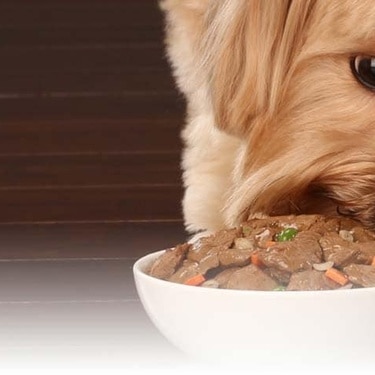 Pet Food Storage Tips
Pet Food Storage TipsWhere you store your cat and dog food can make a big difference in the quality and freshness once it is opened. Here are some common questions and recommendations for optimal storage for all of Hill’s dry and canned cat and dog food.
Read More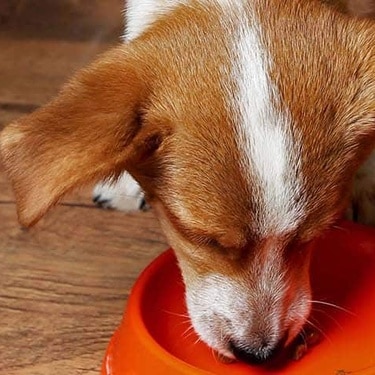 The Right Diet For Your Pet
The Right Diet For Your PetLearn what to look for in healthy pet food & nutrition, including ingredients, quality of the manufacturer, your pet's age, and any special needs they have.
Read More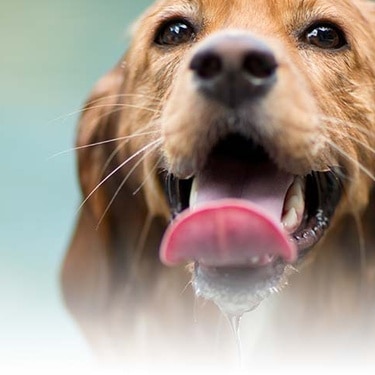 Water
WaterWater is the most important nutrient of all and essential for life. Animals can lose almost all their fat and half their protein and still survive, but if they lose 15% of their water, it will mean death.
Read More -


If you find yourself worrying about finding a lump on your dog or wondering what the lump under your dog's skin is, try not to panic — there are many possible causes for lumps and bumps on your dogs skin. While dogs can develop cancerous tumours, if you find a growth on your dog's skin, many are treatable. A lump or bump can even be as simple as an inflamed hair follicle and so there is no need to panic straight away.
The most important thing for you to do is stay alert to any lumps on your pooch and let your veterinarian know about them as soon as you discover them; that way, they can determine if treatment is necessary.
How Do I Monitor Bumps on My Dogs Skin?
Skin tumours are the most commonly seen tumour in dogs. By regularly examining your dog's skin, you can take a lead role in caring for their health. It is important to establish a weekly routine of inspecting your dog for lumps, cysts or anything unusual. This should be done by feeling from the tip of their nose to the end of their tail. Make sure to hone in on commonly overlooked spots, like between the toes, under the tail and even in your dog's mouth — if they're cooperative. Chances are your pooch will enjoy these extra pets and rubs.
If you find a lump on your dog, make sure to note where it is, and not just mentally. Grab your phone to snap a quick photo or two. A dog's lumps and bumps can change over time, and keeping a log of their locations and sizes will help your vet more effectively manage your dog's health.
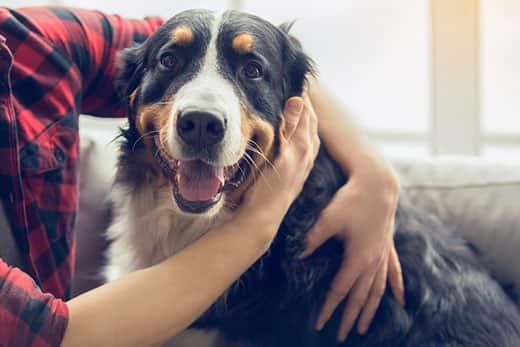
Diagnosing a Lump on My Dog
"What should I do if I find a lump on my dog?" It's a common question pet parents ask. The best thing you can do if you discover a bump on your dog is to schedule an appointment with the vet. While Dr. Google provides a wealth of pet health information, it's easy to go down a rabbit hole of misinformation and panic. Instead, you should go straight to the expert before arriving at any conclusions yourself. Even if your dog is due for an exam in a few months, it is important that you don't wait. Even noncancerous masses can worsen and get infected if you wait too long to bring your dog in for treatment.
Your vet will need to take some tests to accurately diagnose your dog's lump. They may recommend a fine needle aspirate and cytology in order identify a growth on a dog. This is one of the least invasive procedures to evaluate a lump or bump, during which a vet uses a small needle to collect cells. The cells are placed on glass slides and stained for microscopic review. Depending on the type of mass, the vet may be able to diagnose it quickly. Or, your vet may send out the slides to a laboratory to have them reviewed by a specialist.
While a fine needle aspirate is usually helpful, in some cases, with particular types of masses, your vet may need to take a larger biopsy and excise tissue with a scalpel or punch blade. This is a more invasive procedure than a fine needle aspirate and might require sedation or anaesthesia. However, biopsies are usually performed at a vet's office and your dog should be able to return home the same day. This is all common practice when examining growths on dogs.


Tasty Tips
Common Types of Lumps on Dogs
Lumps or bumps can often be categorised into two classifications: skin growths and tumours.
Skin Growths
A skin growth is a benign (non-cancerous) lump of tissue that projects out from the surrounding skin. Below are some of the more common skin growths on dogs:
- Abscesses: These are lumps that form as a result of an infection from a bite, wound or foreign object. They are often painful and can contain large amounts of blood and pus with the possibility of rupturing.
- Apocrine Cysts: These cysts are caused by obstructed skin glands. Think of them much like a human pimple. They may also rupture, which often helps clear them up.
- Hematomas: These occur when blood accumulates beneath the skin following a trauma. These too can be painful for your dog.
- Injection-Site Reactions: Following an injection, your dog may develop a small knot beneath the skin. These can be tender, but often fade within a couple of days or weeks.
- Hives and Other Allergic Reactions: Hives are itchy, swollen pockets of skin as the result of allergic reaction. Other types of bumps can form from different types of allergic reactions.
Types of Skin Tumours in Dogs
The word tumour is one of the scariest words a pet parent can hear. However, not all tumours are cancerous, and even those that are can still be treated. A tumour, simply, is a mass of tissue that forms as the result of the accumulation of abnormal cells. Greencross Vets provides some information around the different lumps and bumps on dogs. Yet read on below to learn about some of the different types of tumours and where they might form on your dog's body:
- Histiocytomas: These small, hard and dome shaped benign growths often appear in younger dogs on their head, ear flaps or legs. They can often disappear, even without treatment.
- Lipomas: These are most commonly found in overweight dogs — they are benign tumours consisting of soft and smooth clumps of fat cells that can grow very large, found most often around the chest, abdomen and front legs.
- Sebaceous Gland Hyperplasia: This type of tumour forms when the glands that secrete sebum (the oily substance that lubricates your dog’s skin) grows rapidly. These are also benign tumours that have a wart-like appearance often found on your dog's legs, torso or eyelids.
- Malignant Skin Tumours: These types are cancerous, and appear as noticeable lumps or sores on the skin that won't heal. The most common type of malignant skin tumours are mast cell tumours. Early detection is key to keeping your dog happy and healthy.
Can a Skin Growth On My Dog Be Treated?
After the lump is diagnosed, your vet will walk you through your treatment options. Know that even when a mass is diagnosed as cancer, your dog can have a great outcome if the lump is treated early and aggressively. Proper nutrition may help manage (and prevent) mild skin bumps and irritation. The right balance of essential fatty acids in dog food can calm sensitive skin and support healthy skin and a shiny coat.
The key to a positive outcome is early treatment, and early treatment can't happen without early detection. If you find a bump on your dog, take a picture, note when it appeared and take your dog in to see the vet as soon as possible. The power to help your dog live a longer, healthier life is at your fingertips.


Dr. Laci Schaible is a small animal veterinarian, veterinary journalist, and a thought leader in the industry. She received her Doctor of Veterinary Medicine from Texas A&M University and her Masters in Legal Studies from Wake Forest University.
Related products

Supports lean muscle and beautiful coat for adult dogs

Gentle on stomachs while nourishing skin & supporting development in growing puppies

This weight management and mobility support dog food was created with Hill’s unique understanding of the biology of overweight dogs

Delicious roasted chicken paired with tender vegetables in a succulent stew
Related articles
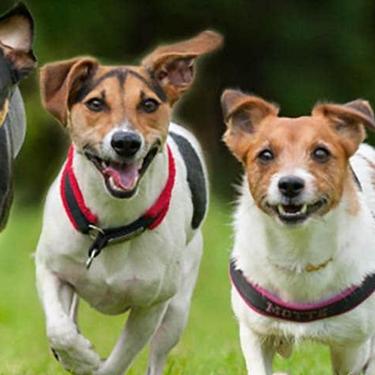
Selecting the right food for your puppy is a key to quality nutrition and a long, healthy life., Learn more about how to select the right puppy food.
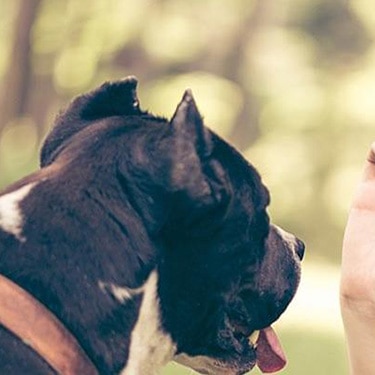
Learn what you can feed your pregnant or nursing dog to keep her and her new pups healthy.
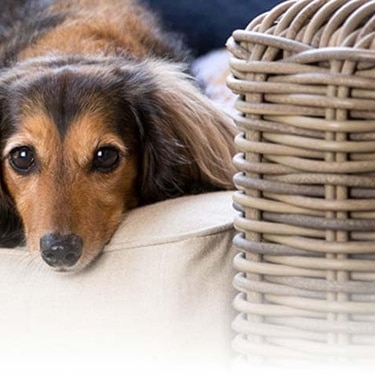
A dog with a sensitive stomach has special needs. Learn more about sensitive stomach symptoms in your dog, what you can do to help sooth your pet’s insides and get recommendations on sensitive stomach dog food.
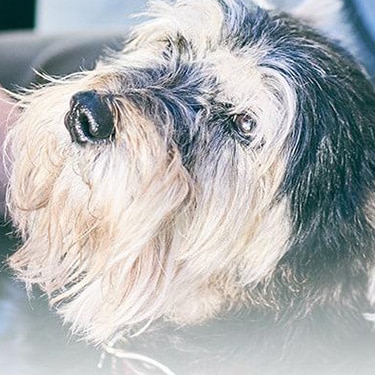
Though it may seem like your four-legged friend loves nothing more than to nap on the couch, dogs need regular exercise to stay healthy just like people do.
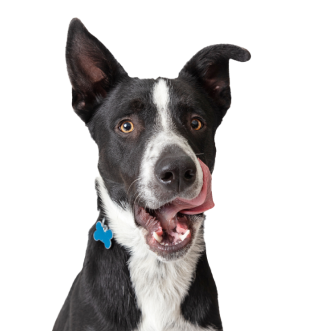
Put your dog on a diet without them knowing
Our low calorie formula helps you control your dog's weight. It's packed with high-quality protein for building lean muscles, and made with purposeful ingredients for a flavorful, nutritious meal. Clinically proven antioxidants, Vitamin C+E, help promote a healthy immune system.
Put your dog on a diet without them knowing
Our low calorie formula helps you control your dog's weight. It's packed with high-quality protein for building lean muscles, and made with purposeful ingredients for a flavorful, nutritious meal. Clinically proven antioxidants, Vitamin C+E, help promote a healthy immune system.

